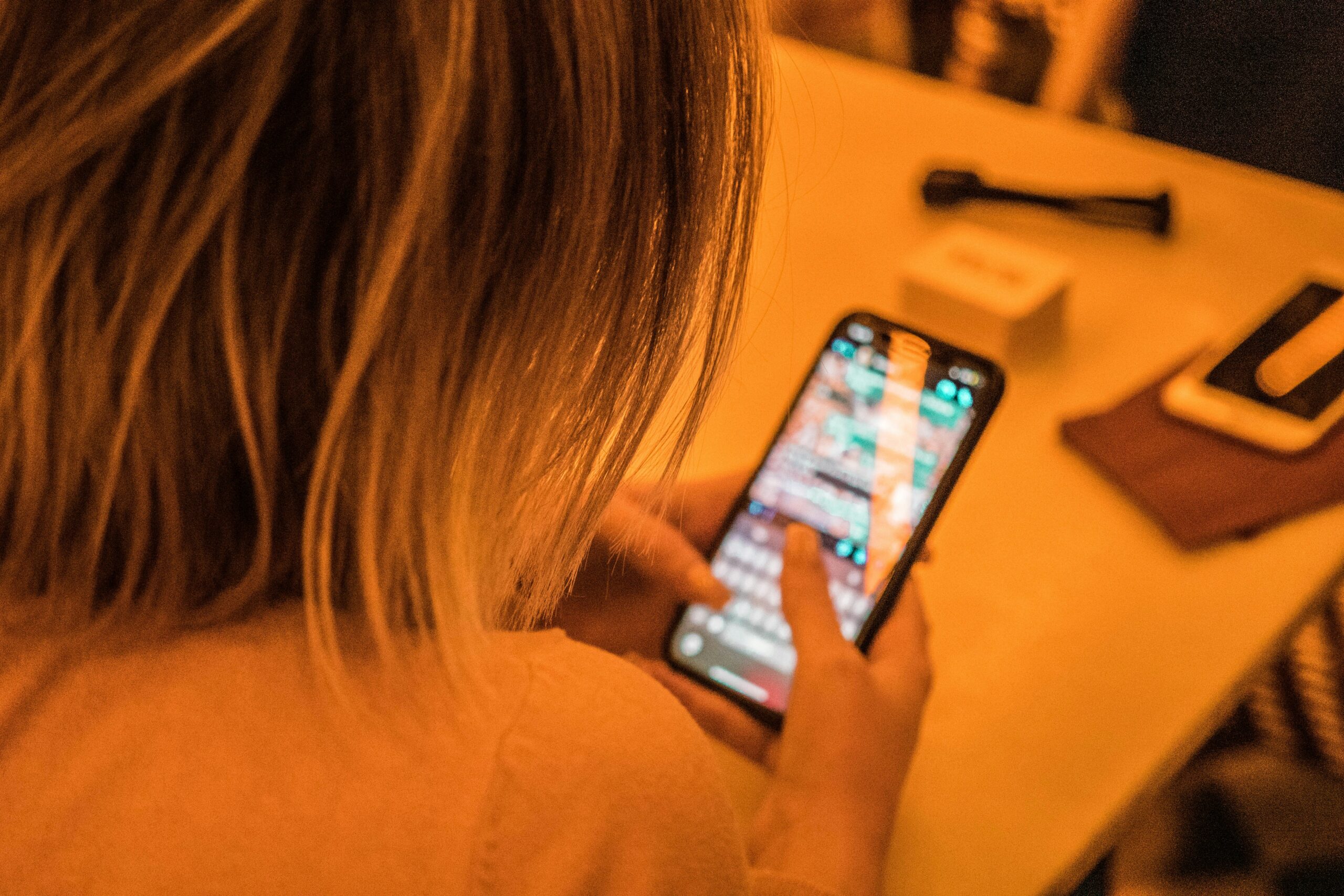
unsplash
The generational gap frequently fosters misunderstandings and confusion between young and elderly people. As technology advances and societal norms shift, younger generations embrace new habits and practices that can leave older individuals feeling perplexed and out of touch. These changes not only highlight the differences in lifestyle and values but also underscore the evolving nature of human interaction and daily life. With each generation bringing its unique perspective and way of life, it’s no surprise that certain behaviors and trends embraced by young people today can seem utterly baffling to their elders. Here are 13 things that young people won’t stop doing that elderly people just don’t understand:
1. Constantly Using Social Media

unsplash
Young people are glued to social media platforms like Instagram, TikTok, and Snapchat, sharing their lives and staying connected with friends and trends. For the elderly, the necessity of constant online interaction is perplexing, as they are accustomed to face-to-face conversations and phone calls for socialization. The concept of documenting daily activities, seeking validation through likes and comments, and following influencers seems foreign and often unnecessary to older generations who value privacy and direct human interaction.
2. Taking Selfies Everywhere

unsplash
Selfie culture is pervasive among young people, who document every moment with photos of themselves. Elderly people often find this behavior odd, preferring traditional photography where the focus is on capturing memorable events rather than self-portraits. The obsession with taking multiple pictures to get the perfect shot, using filters, and sharing these images online can seem superficial and self-centered to older individuals who value more candid and meaningful photographs.
3. Streaming Music and Videos

unsplash
The shift from physical media to streaming services like Spotify, Netflix, and YouTube is second nature to the younger generation. In contrast, older individuals often prefer CDs, DVDs, or live television, finding it hard to grasp the convenience and vast selection offered by streaming platforms. The idea of having access to millions of songs and movies at their fingertips, without the need for physical storage, is a significant technological leap that can be challenging for the elderly to fully appreciate.
4. Texting Over Calling

unsplash
Young people overwhelmingly favor texting and messaging apps for communication, as they value the ability to multitask and appreciate the casual, convenient nature of texts. This digital mode of interaction allows them to maintain multiple conversations simultaneously, share media instantly, and respond at their convenience, fitting seamlessly into their fast-paced, tech-savvy lives. In contrast, elderly individuals typically prefer phone calls, cherishing the personal touch and directness that comes with hearing someone’s voice.
To them, the brevity and sometimes impersonal nature of text messages can seem inadequate for meaningful communication. They grew up in an era where deep, verbal interactions were the norm, and the nuances of tone, inflection, and immediate feedback in a phone call are elements they find essential for genuine connection. The preference for texting among younger generations often feels impersonal and detached to older people, who may struggle to adapt to the less direct, more fragmented nature of digital communication.
5. Using Slang and Emojis

unsplash
The use of slang and emojis in everyday communication is widespread among young people. Some young people can communicate with only emojis in a pinch. This language evolution can leave the older generation confused, struggling to understand the meanings behind these symbols and abbreviations. Emojis add a visual element to text, conveying emotions and reactions that can be lost in plain text, but for the elderly, this can seem like a complicated and unnecessary addition to written communication.
6. Working Remotely

unsplash
Remote work and the gig economy are popular among young professionals, who value flexibility and work-life balance. Most young people would prefer to work from the comfort of their homes and actually seek out jobs specifically that offer this kind of flexibility. For the elderly, who grew up with traditional office jobs and fixed schedules, the concept of working from home or freelancing is often difficult to comprehend. The lack of a physical office environment, set hours, and face-to-face meetings can seem chaotic and unproductive to those who are used to a more structured work life.
7. Following Influencers

unsplash
Young people look up to social media influencers for lifestyle inspiration, product recommendations, and entertainment. Moreover, influencers have become a legitimate and useful marketing strategy for most major corporations. The idea of taking advice from strangers online is foreign to the elderly, who typically rely on trusted friends, family, or professionals for guidance. Influencers’ curated lives and commercial partnerships can seem misleading and superficial to older individuals who value authenticity and expert opinions.
8. Prioritizing Experiences Over Possessions

unsplash
The younger generation often values experiences like travel and dining out over material possessions. Give a young person a road trip or a luxury dining experience, and they will jump at the chance. This contrasts with the older generation, who may prioritize financial stability and owning tangible assets like homes and cars. The idea of spending money on fleeting experiences rather than saving for long-term security can seem impractical and frivolous to those who have lived through times of economic uncertainty.
9. Dating Apps

unsplash
Online dating through apps like Tinder and Bumble has become the norm for young people seeking romantic relationships. These platforms offer a quick, convenient way to meet potential partners by simply swiping right or left based on profile pictures and brief bios. This method, while efficient, is often seen as impersonal by the older generation, who grew up valuing face-to-face introductions and deeper connections. Elderly individuals typically prefer traditional ways of meeting potential partners, such as through mutual acquaintances, community events, or social gatherings. The fast-paced, swipe culture of modern dating apps, with its quick judgments based on superficial criteria and the overwhelming volume of potential matches, can seem insincere and overwhelming to those who value intentional, personal connections and the gradual development of relationships.
10. Embracing Minimalism

unsplash
Minimalism, the practice of living with fewer possessions, resonates strongly with many young people who strive for simplicity and sustainability. This lifestyle emphasizes decluttering, reducing waste, and prioritizing quality over quantity, reflecting a conscious choice to focus on what truly matters. In contrast, the older generation, who may have experienced times of scarcity and economic hardship, often find it challenging to understand the appeal of intentionally having less. For them, accumulating possessions was a way to ensure security and preparedness, values deeply ingrained from their formative years. The minimalist approach can seem drastic and even wasteful to those who were taught to hold onto items for future use, viewing it as a departure from the prudent practices they were raised with.
11. Obsessing Over Fitness Trends

unsplash
Young people today are heavily influenced by the latest fitness trends, from CrossFit to yoga and HIIT (High-Intensity Interval Training) workouts. They often engage in these activities not just for health benefits but also as a social activity and a way to challenge themselves physically. This intense dedication to new workout regimes, specialized diets, and fitness challenges can appear extreme and unsustainable to the older generation, who generally prefer more conventional forms of exercise like walking, swimming, or gardening. Elderly individuals value moderation and consistency in physical activity, finding the intense, sometimes fad-driven nature of modern fitness trends to be impractical and even risky. The high-energy environment of these workouts can seem off-putting to those who have long relied on steady, tried-and-true methods for maintaining health and well-being.
12. Gaming Culture

unsplash
Video games have become a central part of entertainment for young people, who often spend hours playing online with friends and engaging in virtual worlds. For the elderly, gaming can seem like a frivolous and isolating activity, a stark contrast to the more social and passive forms of entertainment they grew up with, such as playing board games or watching television with family. The competitive nature, virtual interactions, and immersive environments created by modern games are difficult for older generations to understand. They may not see the community, skill-building, and strategic thinking involved in gaming, viewing it instead as a waste of time. The vibrant, fast-paced, and often complex world of gaming is a far cry from the simpler, more straightforward pastimes that the elderly prefer, highlighting a significant cultural divide between the generations.
13. Sharing Economy

unsplash
Young people readily embrace the sharing economy, using services like Airbnb, Uber, and TaskRabbit to share resources and services. For many young people, these apps are the height of convenience. Elderly individuals, accustomed to owning and managing their assets, may struggle to see the benefits of this communal approach. The idea of relying on strangers for accommodation, transportation, or tasks can seem risky and unreliable to those who prefer self-sufficiency and personal ownership.
Bridging the Generational Gap

pixabay
Understanding these differences is crucial in bridging the generational gap and fostering mutual respect between young people and the elderly. Each generation brings unique strengths and perspectives to the table, and by recognizing and appreciating these differences, we can create a more harmonious and inclusive society. Young people can benefit from the wisdom, life experiences, and timeless values of the older generation, gaining insights into resilience, patience, and the importance of face-to-face communication. On the other hand, elderly individuals can learn from the innovations, technological advancements, and fresh viewpoints of the younger generation, discovering new ways to stay connected, informed, and engaged with the world around them.
By embracing these differences, both generations can enhance their relationships and develop a deeper appreciation for each other’s perspectives. This mutual understanding can lead to more meaningful interactions, where the energy and creativity of youth are balanced by the knowledge and stability of age. It’s about finding common ground, where the past and present converge to create a richer, more diverse tapestry of human experience. Encouraging intergenerational dialogue and collaboration not only strengthens familial and social bonds but also paves the way for a future where everyone feels valued and understood.

Stephen began his career as a Research Assistant at a reputable middle-market private equity firm, where he honed his skills in market research, financial analysis, and identifying investment opportunities. He then transitioned to full-time financial writing focusing on small-cap biotech innovation and digital payment solutions. Today, Stephen is a value-based retail investor and novice baseball statistician.
Leave a Reply